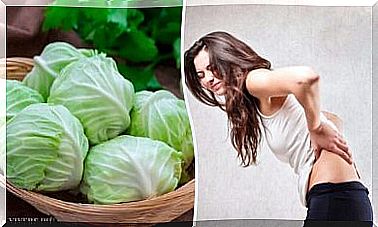The Color Of Food: What Does It Hide?

“Eat at least one dark green vegetable and another orange every day”. This is what the Canadian health ministry advises. How true is this advice? Does the color of the food depend on the quality or nutritional properties?
Broadly speaking, we could say that not all foods with a similar color have the same characteristics. From a nutritional point of view, it would be difficult to combine milk with onion, red tuna with tomatoes or walnuts with wholemeal pasta.
However, the situation changes if we only talk about foods of plant origin. In the case of fruit and vegetables, the color of the food gives us interesting information on their properties.
Phytochemicals: the pigments of the plant kingdom
All foods contain macronutrients (carbohydrates, lipids and proteins) and micronutrients such as vitamins and minerals. However, foods of plant origin also contain other substances, phytochemical compounds.
These are present for the benefit of the plant itself, but also affect our health. Most of them have a strong antioxidant action and protect against diseases including some types of cancer, degenerative or cardiovascular diseases.
There is a good deal of literature in this field and soon we will have more precise data on the relationship between food color and health.
What does the color of food tell us?
In general, we can group the phytochemicals that give color to food in three large groups : carotenoids, chlorophyll and anthocyanins.
Carotenoids: not just for the skin

Carotenoids are a group of pigments that are important for our health, but we are unable to synthesize them independently. We need, in fact, to take them with food. We find them in vegetables of orange, yellow and red color.
Research indicates that carotenoid consumption is associated with a lower risk of suffering from cardiovascular disease. They are also powerful antioxidants, protect the skin and contribute to eye health.
In this case it is good to know that we get the benefits of carotenoids from whole foods. At present, the same effect has not been observed in supplements. The foods richest in carotenoids are colored:
- Red : tomatoes, cherries, strawberries, watermelons, red peppers.
- Orange : carrots, papaya, apricots, peaches.
- Yellows : yellow melon, mango, corn.
Chlorophyll
Foods rich in chlorophyll are easy to recognize: they are green in color. They help us oxygenate the body, promote the elimination of heavy metals and keep the intestinal flora in good condition. Several studies suggest that chlorophyllin may have antioxidant properties and help prevent cell damage caused by free radicals.
We find chlorophyll in most green leafy vegetables: beets, spinach, broccoli, asparagus, cabbage and artichokes. It is also found in kiwis. These foods are also typically high in vitamin K, folic acid, and magnesium.
Furthermore, most of them hide a treasure: they are also rich in carotenes, but the yellow pigment remains covered by the green color of chlorophyll.
Purple anthocyanins
Anthocyanins are easily recognized by their purple or blue color. The best sources of anthocyanins are blueberries, blackberries, grapes and red cabbage.
The antioxidant effects of anthocyanins are related to a reduced risk of myocardial infarction in young and middle-aged women. Epidemiological studies also link regular consumption of anthocyanins with:
- Lower risk of cardiovascular disease.
- Lower incidence of type 2 diabetes.
- Neuroprotective effect.
- Better maintenance of a healthy weight.
- Lower mortality.
Food color: what about white?

We cannot close this review on the color of food without talking about white. Although less showy, these foods also contain noteworthy nutrients.
Leeks, radishes, onions or garlic are rich in indoles. Furthermore, garlic and onion are a good source of quercetin and allicin, substances that are friendly to cardiovascular health.
The color of food and diet
Of course, to follow a healthy diet, we cannot only consider the color of the food. The nutritional value of fruits, vegetables and grains is also determined by other elements. There are, for example, other phytonutrients that are not recognizable by color.
Nor can we say that the best fruit is orange or purple or that to prevent cardiovascular disease it is good to eat only red fruits and vegetables.
From a chromatic point of view, the important thing is to bring the maximum variety of colors to the table. The more varied our diet, the lower the risk of encountering specific deficiencies.
So, let’s ensure a balanced intake of all phytochemicals and enjoy the goodness of seasonal fruit and vegetables. Remembering that there are many other examples in addition to those mentioned. Finally, food is also eaten with the eyes… isn’t a dish full of colors more appetizing?









